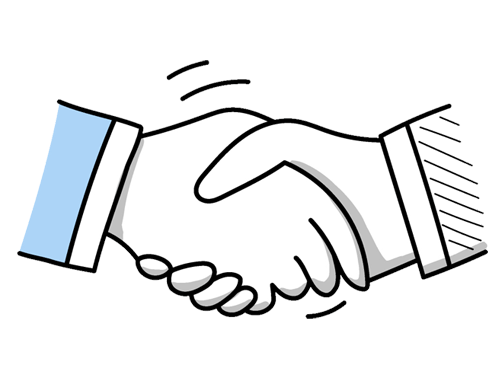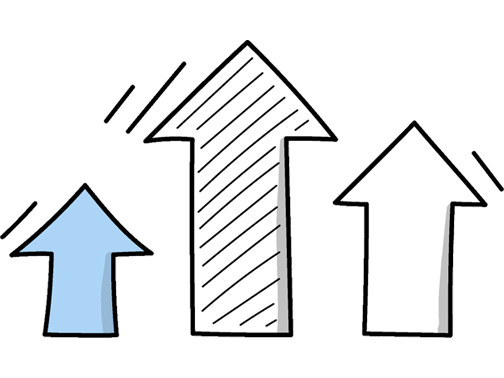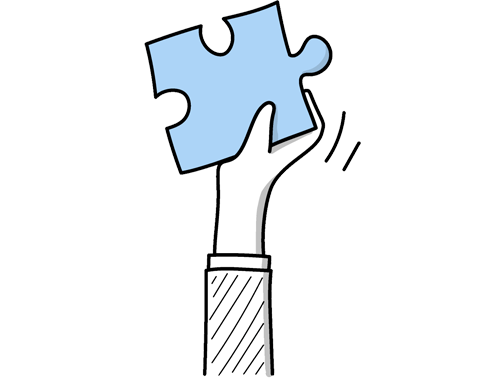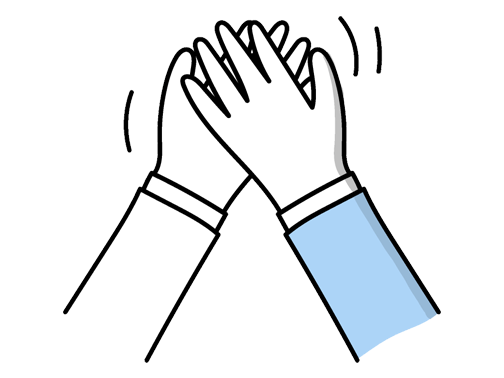Steel Estimator Interview Questions (2025 Guide)
Find out common Steel Estimator questions, how to answer, and tips for your next job interview
Practice Interviews Online - Identify your strengths and weakness in a realistic Steel Estimator mock interview, under 10 minutes
Practice Now »Steel Estimator Interview Questions
Questions like this assess your understanding of the technical standards that ensure accuracy and compliance in steel estimation. You need to mention key standards like BS EN 1993, explain how you apply them to calculate materials precisely, and highlight using industry software tools that support these codes.
Example: When estimating steel requirements, I rely on UK standards like BS EN 1993 for structural steel design and steelwork specification, ensuring accuracy and compliance. I also consider ASTM standards where applicable, especially for certain materials. Using industry-recognized software helps me apply these codes effectively, while cross-checking calculations against best practices ensures practical, reliable estimates that align with project specifications and client expectations.
This interview question aims to assess your practical experience and accuracy in estimating steel needs, showing your attention to detail and understanding of project requirements. In your answer, clearly describe the project scope and how you calculated quantities, highlighting any challenges you overcame to deliver precise estimates on time.
Example: In a recent project for a commercial building, I carefully reviewed the architectural plans and collaborated with the design team to ensure accurate steel quantity take-offs. By cross-checking specifications and considering waste factors, I provided a precise estimate that helped keep the budget on track. My attention to detail avoided over-ordering and supported timely procurement, ultimately contributing to a smooth construction process.
This interview question aims to assess your problem-solving skills and your ability to handle challenges specific to steel estimation. In your answer, clearly describe the problem, the steps you took to analyze and resolve it, and the positive outcome or lesson learned.
Example: In a recent project, the design specs changed midway, affecting steel quantities significantly. I reviewed the new drawings carefully, recalculated the estimates, and coordinated with suppliers to adjust costs quickly. This ensured the budget stayed on track without delays. Clear communication and attention to detail helped navigate the challenge smoothly and kept the project moving efficiently.
This question checks your problem-solving and communication skills when project details are missing or unclear. You need to explain that you clarify uncertainties by consulting stakeholders, analyze available information for risks, and document assumptions with contingency plans.
Example: When I come across unclear project details, I first reach out to the project team or client to get a clearer picture. Meanwhile, I review all the information available to spot any risks or gaps. I also make sure to note down any assumptions I’ve made along the way, so everyone’s on the same page. For example, on a recent job, clarifying specs early helped avoid costly changes later.
Employers ask this question to assess your understanding of cost factors and accuracy in budgeting. You should explain that you consider material quantities, current steel prices, labor costs, waste allowances, and project specifications to create a detailed and realistic estimate.
Example: When estimating steel costs, I start by reviewing the project drawings and specifications to understand quantities and types needed. I check current market prices and factor in wastage and delivery charges. For example, on a recent job, accounting for offcuts and transport helped keep the budget realistic. I also consider fabrication and labour costs to provide a complete, accurate estimate that aligns with the client’s requirements.
Employers ask this to see how well you work across teams and contribute to project success. You need to explain how you coordinated between departments, improved outcomes through collaboration, and adapted your communication to meet different needs.
Example: In a recent project, I worked closely with design and procurement teams to align specifications and materials early on. Regular check-ins helped us address challenges quickly, preventing delays. This teamwork ensured accurate estimates and kept the project on schedule, saving costs and strengthening trust across departments. Clear communication and flexibility played a big part in making that collaboration successful.
Employers ask this question to understand your technical skills and how you leverage software to enhance estimation accuracy. You should mention relevant tools like AutoCAD Steel Detailing and explain how you use them to produce precise material takeoffs and improve your estimates.
Example: I’m experienced with software like Tekla Structures and Trimble SysQue, which help me create detailed, accurate estimates quickly. I often use these tools alongside Excel to cross-check quantities and costs, ensuring precision. Integrating these programs into my daily workflow has boosted efficiency and reduced errors, allowing me to deliver reliable estimates that support smooth project planning.
What they want to know is how you stay flexible and accurate when project details change. You need to explain how you spotted the new requirements, the exact changes you made to your estimates, and how those changes helped keep the project on budget and on time.
Example: During a recent project, changes to design specifications meant my initial steel quantities were off. I reviewed the updated plans closely, adjusted material allowances to reflect tighter tolerances, and consulted with suppliers for lead times. This helped keep costs accurate and avoided delays. As a result, the project stayed on budget and timelines were met, showing how staying flexible and detail-oriented keeps estimates reliable.
This question assesses your communication skills and ability to simplify technical information for others. In your answer, explain how you broke down the complex details clearly and ensured the team member understood the key points without overwhelming them.
Example: In a previous role, I explained a detailed steel cost breakdown to a project manager unfamiliar with technical terms. I used simple, relatable comparisons—like equating steel weight to everyday objects—to clarify quantities and costs. This approach helped them understand the estimate clearly, enabling confident decision-making without overloading them with jargon.
What they want to know is how much relevant experience you bring to the role, showing your familiarity with estimating steel projects accurately. You need to clearly state the number of years you have worked in steel estimation and briefly mention the types of projects or responsibilities you've handled.
Example: I have spent several years working closely with steel estimation, developing a strong understanding of material requirements and cost analysis. For example, in my previous role, I regularly prepared detailed estimates for various steel structures, ensuring accuracy and efficiency. This hands-on experience has given me confidence in assessing project needs and contributing to successful budgeting and planning.
Hiring managers ask this question to see if you can identify inefficiencies and implement solutions that save time or increase accuracy. In your answer, clearly describe a specific change you made to the estimation process and explain the positive impact it had on the project or team.
Example: In a previous role, I noticed our steel estimates often took longer than necessary and sometimes missed key details. I introduced a streamlined checklist that integrated supplier data and typical project variations, which helped reduce errors and sped up the process. This not only improved accuracy but also allowed the team to focus more on value planning rather than just number crunching. It made a noticeable difference in both time and quality.
Interviewers want to see that you can effectively manage time and resources to meet deadlines without sacrificing accuracy. You need to explain that you assess project deadlines and complexity first, then organize tasks by urgency and importance to ensure timely and precise estimates.
Example: When balancing several estimates at once, I start by understanding each project's deadlines and complexity. I focus first on tasks that impact others or have tighter timeframes. For example, if one estimate depends on supplier quotes, I prioritize getting those details early. Staying organized with clear checklists and regular updates helps me keep everything on track without missing any key details.
This interview question aims to assess your experience with large-scale projects and your ability to manage complex steel estimating tasks accurately. In your answer, clearly describe the size and complexity of your biggest project, the tools and methods you used, and how your estimates contributed to the project's success.
Example: One of the largest projects I worked on was a multi-story commercial development in London, involving complex steel frameworks. I used detailed quantity take-offs combined with digital estimating software to ensure accuracy. My estimates helped the team manage costs effectively and kept the project on schedule, contributing to smooth coordination between suppliers and contractors. It was rewarding to see how precise planning made a real difference in delivering a challenging build.
Interviewers ask this to see how you handle changes and ensure accuracy in your work. You need to explain a specific situation where you updated an estimate due to new information or errors, and show that your revision led to a better project outcome.
Example: Yes, I’ve had to revisit estimates when project scopes changed or unexpected site conditions arose. For example, once a design adjustment required more steel than initially planned. I reviewed the drawings, coordinated with the design team, and updated the estimate promptly. This ensured the client stayed informed and avoided delays, maintaining trust and keeping the project on track.
Hiring managers ask this to see how you learn from mistakes and improve accuracy over time. You need to say you analyze the root cause of discrepancies, adjust your estimating methods accordingly, and communicate openly with project managers to keep everyone aligned.
Example: When I notice differences between my estimates and actual costs, I review the details carefully to understand what caused the gap—whether it was material price changes or unexpected site conditions. I then adjust my approach to prevent similar issues and keep everyone in the loop by discussing these lessons with the team and clients, ensuring transparency and continuous improvement. For example, after one project’s steel costs rose, we refined supplier quotes for future bids.
Employers ask this to see if you can accept input and improve your work. You need to say you listen carefully, analyze the feedback, and adjust your estimates to ensure accuracy and project success.
Example: I welcome feedback on my estimates as it helps me improve accuracy and learn from different perspectives. When someone raises concerns, I listen carefully, review the details, and adjust if needed. For example, in a previous project, a colleague pointed out a missed material cost, which I immediately corrected, ensuring the final bid was both competitive and reliable. This collaborative approach makes the process stronger and builds trust.
Employers ask this question to see if you have a reliable method to produce precise estimates, which helps prevent costly errors and project delays. You should explain that you carefully review project drawings, cross-check quantities using estimation software, and collaborate with engineers or architects to confirm all data is accurate.
Example: To ensure my steel quantity takeoffs are spot on, I start by carefully examining all project drawings and specs, making sure nothing’s missed. I rely on digital tools that help pinpoint measurements with precision, which speeds things up and cuts errors. I also keep in close touch with engineers and suppliers to cross-check figures and clarify any uncertainties. This team approach really helps catch any discrepancies early on.
Hiring managers ask this question to see how you connect your estimating work with the bigger picture of project goals and ensure accuracy over time. You need to show that you carefully review project details, align your estimates with the schedule and budget checkpoints, and actively communicate with the team to keep your numbers updated and realistic.
Example: To keep my estimates in line with project budgets and timelines, I start by carefully reviewing the project details and any specifications. I work closely with project managers and suppliers to align costs with scheduled milestones. Regular check-ins and open communication help me spot any changes early, so I can adjust estimates before they impact the overall plan. For example, on a recent job, this approach prevented budget overruns despite last-minute design tweaks.
This question assesses your ability to accurately understand project specifications and details, which is crucial for precise cost estimation. You need to explain your experience identifying key elements in blueprints and how you use that information to ensure accurate steel quantity calculations.
Example: In my previous roles, reading blueprints was a daily task. I’m comfortable identifying key structural elements and specifications to ensure accurate material estimates. For example, on one project, I spotted a discrepancy between the drawing and on-site measurements early, which helped avoid costly errors. Understanding technical drawings helps me collaborate effectively with engineers and fabricators, ensuring projects stay on track and within budget.
Questions like this assess your ability to stay organized and resourceful under pressure, which is crucial for meeting project deadlines accurately. You should explain how you prioritize tasks, delegate responsibilities based on team strengths, and keep clear communication with all stakeholders to ensure timely delivery without compromising quality.
Example: When facing tight deadlines, I focus on tackling the most important tasks first, making sure the key parts of the estimate are accurate and complete. I also keep the team aligned, assigning roles clearly so everyone knows what they’re responsible for. Open communication is key—I regularly check in with project managers and suppliers to stay ahead of any issues and adjust plans if needed. This approach helps me deliver quality work on time.
Interviewers ask this question to see if you can effectively manage your time, stay organized, and communicate clearly while handling multiple projects. You need to say that you use project management tools to track progress and deadlines, regularly update your team and clients on changes, and consistently review costs and resources to keep estimates accurate.
Example: When managing several projects, I rely on a clear system to organize estimates and deadlines, often using project management tools to keep everything visible. Regular check-ins with the team help ensure everyone’s aligned and any changes are communicated promptly. I also keep a close eye on budgets and resources, adjusting estimates as needed to stay realistic and avoid surprises down the line. This approach keeps projects on track and clients informed.
This question reveals how you navigate team dynamics and ensure accurate estimates through collaboration. You need to explain that you listen carefully to understand all viewpoints, analyze the root causes of disagreements, and propose compromises that align with project goals.
Example: When disagreements arise over estimates, I focus on listening carefully to everyone's perspective to understand their concerns fully. I try to find common ground by discussing the data and project goals openly, aiming for solutions that balance accuracy with practicality. For example, in a previous project, we resolved a cost discrepancy by reviewing supplier quotes together, which helped us agree on a fair estimate while keeping the project on track.
This interview question helps the employer understand how you handle complex estimation challenges and manage multiple responsibilities under pressure. You need to explain a specific project where you identified difficult cost factors, collaborated with stakeholders to ensure accurate data, and organized your work to meet deadlines effectively.
Example: Certainly. On a recent project with tight deadlines and incomplete drawings, I prioritized clear communication with suppliers and the design team to clarify details early. By breaking down the scope into manageable parts and setting interim targets, I kept the process on track. Regular updates ensured everyone stayed aligned, helping me deliver an accurate estimate on time despite the complexities involved.
Hiring managers ask this to assess how clearly and effectively you share critical information that impacts project planning and budgeting. You need to say you provide clear, detailed estimates using accessible language and visuals, and ensure you confirm understanding and address any questions promptly.
Example: When I share estimates with project managers and stakeholders, I focus on clear, straightforward communication. I explain the numbers and assumptions behind them, ensuring everyone understands the scope and potential risks. For example, I might highlight where steel prices could affect the cost or timeline. I encourage questions to keep things transparent and collaborative, so the team feels confident moving forward.
Hiring managers ask this to see how you maintain clear communication and prevent costly errors in projects. You need to explain that you use regular meetings and shared digital tools to promptly update all team members on any estimation changes.
Example: I make sure communication is clear and timely by holding brief, regular check-ins where any updates are shared openly. I also use simple tools like shared documents or group chats to keep everyone on the same page. In one project, this approach helped the team quickly adjust estimates when design changes came through, avoiding delays and confusion. It’s about keeping the flow of information consistent and accessible for all involved.
Ace your next Steel Estimator interview with even more questions and answers
Common Interview Questions To Expect
The interviewer is looking for how you handle criticism, your ability to reflect on feedback, and how you have used criticism to improve your work. Be honest and show a willingness to learn and grow from feedback.
Example: Sure! One time, a colleague pointed out some errors in my steel estimating calculations. I took their feedback constructively, reviewed my work, and made the necessary corrections. It was a valuable learning experience that helped me improve my accuracy in future projects.
Candidates can answer by mentioning the company's history, values, products/services, recent news, or industry reputation. Interviewers are looking for candidates who have done their research and are genuinely interested in the company.
Example: I know that your company has been a leader in the steel industry for over 50 years, providing high-quality products and services to clients across the UK. I also read about your recent expansion into international markets, which shows your commitment to growth and innovation. I'm excited about the opportunity to be a part of a company with such a strong reputation and track record of success.
The interviewer is looking for examples of how you have successfully collaborated with others, communicated effectively, and contributed to achieving team goals. Be prepared to discuss specific projects and outcomes.
Example: Sure! In my previous role as a Steel Estimator, I worked closely with a team of engineers and project managers to accurately estimate costs and timelines for steel construction projects. We communicated regularly to ensure everyone was on the same page and worked together to meet deadlines and deliver high-quality results. Overall, my experience working in a team has taught me the importance of collaboration and effective communication in achieving success.
Interviewees can answer by discussing a specific mistake, acknowledging responsibility, explaining how they rectified the situation, and highlighting lessons learned. Interviewers are looking for honesty, accountability, problem-solving skills, and the ability to learn from mistakes.
Example: Yes, I once miscalculated the quantity of steel needed for a project, resulting in a delay in delivery. I immediately informed my supervisor, took responsibility for the error, and worked with the team to expedite the order. I learned the importance of double-checking my calculations and now have a system in place to prevent similar mistakes in the future.
The interviewer is looking for your level of interest in the company and the role, as well as your curiosity and critical thinking skills. You can ask about company culture, team dynamics, future projects, or opportunities for growth.
Example: Yes, I was wondering about the company culture here at XYZ Steel. Can you tell me more about the team dynamics and how collaboration is encouraged? Also, I'm curious about any upcoming projects or opportunities for growth within the company.
Company Research Tips
The company's official website is a goldmine of information. Look for details about the company's history, mission, vision, and values. Understand their products, services, and client base. Pay special attention to any section related to steel estimation or similar roles. This will give you a clear idea about what the company expects from this role.
Tip: Don't just skim through the website. Take notes and try to understand the company's culture and work ethics. Look for any recent news or updates about the company.
LinkedIn can provide valuable insights about the company and its employees. Look for the company's page and go through their posts to understand their recent activities and achievements. Also, try to find profiles of people who are currently working or have worked in the same or similar role. Their profiles can give you an idea about the skills and experience required for the job.
Tip: Use LinkedIn's advanced search features to find relevant profiles. Also, look for any common connections who might provide insider information.
Understanding the steel industry in the UK can be beneficial. Look for recent trends, challenges, and opportunities in the industry. This will not only help you understand the company's position in the market but also make you appear knowledgeable and interested in the industry during the interview.
Tip: Use reliable sources for your research like industry reports, news articles, and market research websites. Try to relate the industry trends with the company's activities.
The job description is a crucial source of information. It tells you exactly what the company is looking for. Analyze the job description thoroughly to understand the skills, qualifications, and experience required. Also, try to understand the responsibilities and challenges of the role.
Tip: Use the job description to tailor your responses during the interview. Highlight your skills and experiences that match the job requirements.
What to wear to an Steel Estimator interview
- Dark-colored business suit
- White or light-colored dress shirt
- Conservative tie
- Polished dress shoes
- Clean, well-groomed appearance
- Minimal jewelry
- Avoid flashy colors or patterns
- Neatly styled hair
- Light application of cologne or perfume
- Carry a briefcase or portfolio





